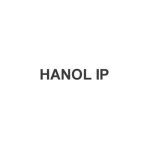It is often time that matters in business. For trademarks, a prompt registration is probably the single most important issue in all areas of business, not just in the fashion industry. In Korea, it takes approximately one to 1.2 years to obtain a registered trademark using the regular system. However, this period can be shortened substantially if one uses fast-track examination.
Regular examination v fast-track examination in Korea
Trademark applications are examined in order of filing date in Korea. Allowance of a registration is determined through substantive examination including absolute grounds for rejection, such as inherent distinctiveness of the marks etc. as well as relative grounds for rejection, such as prior rights of others etc.
Under local practice, it takes about eight to 10 months to receive the first examination result from the filing date. If there is no ground for rejection, an application is published for opposition purposes for two months, and if no opposition is filed, the mark will be registered upon payment of the registration fee. This entire procedure usually takes about one to 1.2 years from the filing date.
Instead of taking a regular track, one may request fast-track examination. If the request is approved, the applicant may receive the examination results within about one to two months from the date of request. Thus, under the fast-track system, examination starts at least six months earlier than under the regular track system.
Fast-track examination can be based on various grounds
Fast-track examination can be based on several statutory grounds (the Korean Trademark Act and its Enforcement Decree).
The most common basis for requesting fast-track examination is that the applicant is currently using the trademark or is about to use the trademark soon in Korea. In this case, the actual use of the trademark or the plan to use the trademark in the near future for at least one item of each similar group of designated goods of the applied for mark must be proved by objective evidence.
If the applicant's trademark is appropriated by an unauthorised party, it is possible to request fast-track examination by providing objective evidence such as a copy of the cease-and-desist letter or a copy of the preliminary injunction petition, etc. Fast-track is also available when the applicant for a trademark receives a warning letter from a third party as to the use of his or her mark, or receives an observation brief (based on the third party's prior application/registration).
If the owner of a mark failed to renew the registration, he or she can request fast-track examination with respect to the same mark and designated goods.
As of July 2019, the Korean Intellectual Property Office (KIPO) has made it possible to request fast-track examination when the applicant submits results of the prior mark search conducted by a professional search agency designated by KIPO. The significance of this modification is that the request for fast-track examination does not require objective evidence of actual use or infringement as mentioned above, thus providing a very easy and efficient way of accelerating trademark examination. Foreign applicants can enjoy all the same benefits when they file a trademark application in Korea.
Although fast-track examination can shorten the duration until the issuance of a first office action, the trademark registration may be delayed due to the time required for responding to the office action. For foreign applicants, one of the main office actions is that the description of designated goods fails to conform to the necessary requirements. This may be resolved efficiently at the time of filing with proper consulting and amendment. In case it is necessary, a request for a "shortened response period" may also be filed, which can shorten the examination period for the submitted response by about one to two months.
Fast is a trend
In Korea, the number of trademark applications using the fast-track system has increased significantly, starting from 654 in 2009, to 5,734 in 2018 and 7,595 in 2019. The number is further increasing in 2020, with the adoption of new changes in 2019. As the statistics show, it is certainly an option many companies try when they file trademark applications in Korea.
Min Son
Partner, Hanol IP & Law












